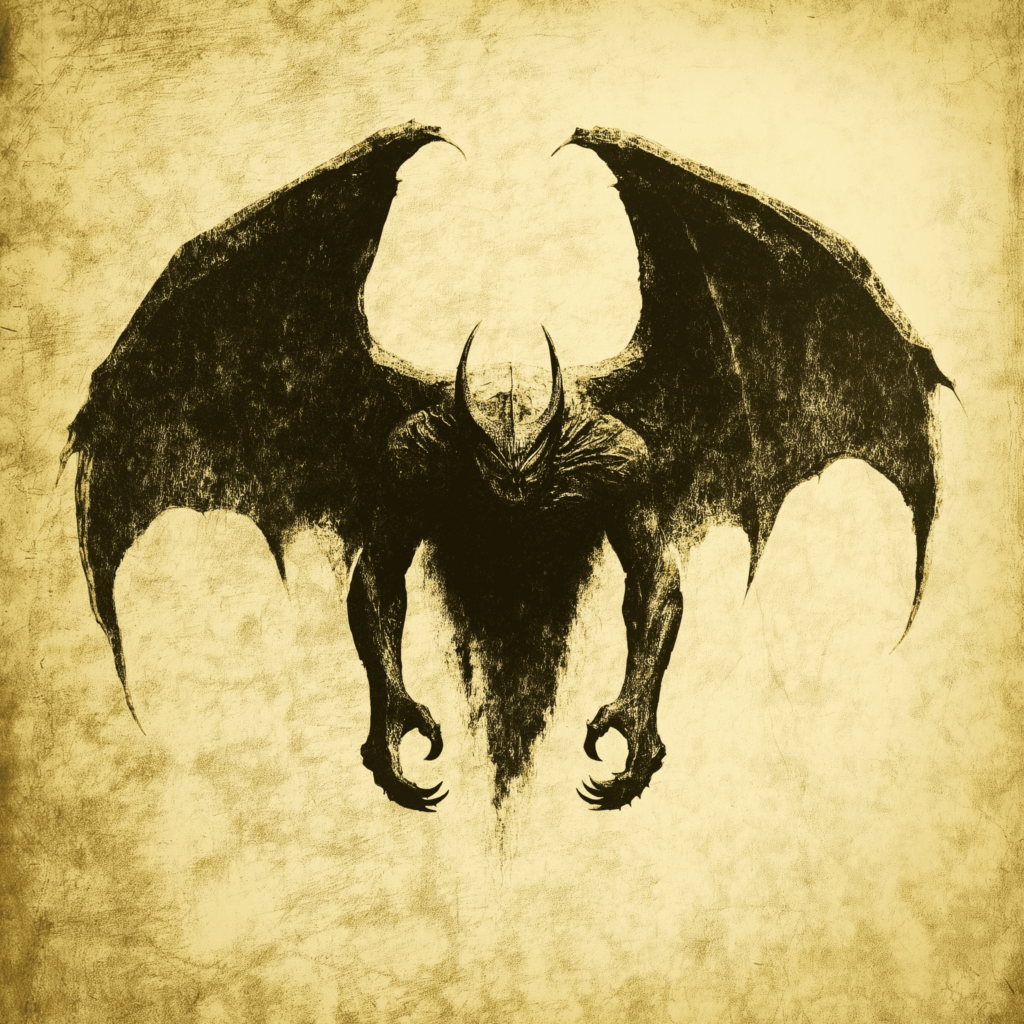The Manananggal is a terrifying, vampire-like creature from Philippine folklore. Known for its ability to separate its upper body from its lower half and fly into the night to feed on human prey, particularly pregnant women and newborns, the Manananggal is one of the most infamous and feared creatures in Philippine mythology.


Etymology
The word “Manananggal” comes from the Tagalog word “tanggal”, which means “to remove” or “to separate.” The term refers to the creature’s ability to split its body in half, a key feature of its myth. “Manananggal” can be translated as “one who detaches” or “one who removes”—a direct reference to its ability to separate its torso from its lower body.
Description and Abilities
- Appearance:
- The Manananggal is often described as a woman during the day, appearing to be a normal human, often beautiful and unsuspecting. However, at night, it transforms into a fearsome creature. Its upper half detaches from its lower half, and large bat-like wings sprout from its back, enabling it to fly.
- In its monstrous form, it has sharp claws, fangs, and a long, tube-like tongue, which it uses to feed on blood or internal organs, especially fetuses from pregnant women.
- Feeding Habits:
- The Manananggal is a nocturnal predator, primarily targeting pregnant women. It uses its long, tubular tongue to suck the blood or devour the fetus directly from the womb of its sleeping victim.
- It is also said to prey on sleeping people in general, drinking their blood or consuming their internal organs. In some versions of the myth, it prefers to feed on hearts or livers.
- Detachment and Flight:
- One of the most distinctive abilities of the Manananggal is its power to detach its upper torso from its lower half. It leaves the lower part of its body standing in a hidden, secluded spot, while the upper part flies into the night in search of victims.
- The upper body has bat-like wings that allow it to soar through the air, silently stalking its prey. It often hunts in rural areas, sneaking into homes under the cover of darkness.
- Weaknesses:
- The Manananggal is particularly vulnerable during its separated state. If its lower half is discovered while it is hunting, it can be destroyed by rubbing salt, garlic, or ashes on it. This prevents the upper half from reattaching, leaving the creature to perish when the sun rises.
- Sunlight is another weakness, as the creature is vulnerable to light and cannot survive in direct sunlight. If it cannot return to its lower body before dawn, it will die.
- Transformation:
- According to some versions of the myth, a person can become a Manananggal by performing certain rituals or consuming a special black chick that resides within its stomach. This transformation is believed to give the person the ability to separate their body and feed on humans.
Origins and Cultural Context
- Regional Variations:
- The Manananggal is most commonly found in the folklore of the Tagalog-speaking regions of the Philippines, but similar creatures exist in other parts of the country. In the Visayas, a similar creature known as the Wak Wak or Aswang shares many of the same traits, particularly the ability to fly and feed on human flesh.
- The Tiktik is another creature related to the Manananggal, often described as its companion or a type of bird that makes a “tik-tik” sound, warning people of the creature’s presence. However, the sound is deceptive, as the louder it seems, the farther away the Manananggal is, and the quieter it seems, the closer it is.
- Connection to Pregnancy:
- The Manananggal’s preference for pregnant women and newborns is thought to reflect cultural concerns about pregnancy, childbirth, and infant mortality. In pre-colonial and rural Filipino communities, these stages of life were seen as vulnerable times, and the Manananggal symbolizes the dangers that could threaten mothers and children.
- It also highlights the belief that certain supernatural creatures prey on the weak and defenseless, particularly during the night when people are most vulnerable.
- Social and Cultural Interpretation:
- Some scholars and folklorists interpret the Manananggal as a symbol of empowered women or independent women who deviate from traditional roles. In many versions of the myth, the creature is a woman who transforms into a monstrous figure, gaining power and control, though at the cost of becoming a feared predator.
- On the other hand, the Manananggal can also be seen as a reflection of societal fears about female sexuality and independence, especially in conservative, patriarchal societies. Its ability to transform, fly freely, and attack helpless victims at night could be viewed as a warning against women who break away from traditional gender norms.
Modern Depictions and Influence
- Films and Television:
- The Manananggal is one of the most popular creatures in Philippine horror films and TV shows. It has been featured in numerous local horror movies, often as the main antagonist. Its terrifying ability to fly and prey on pregnant women makes it an ideal subject for horror-themed media.
- Some notable films featuring the Manananggal include “Manananggal in Manila” and “Shake, Rattle & Roll,” a long-running horror anthology series in the Philippines.
- Literature and Art:
- The Manananggal has also appeared in literature and art, both in the Philippines and internationally. In modern times, it has been reimagined in different forms, blending traditional folklore with contemporary themes. It is also a popular subject for comics, urban fantasy, and graphic novels in the Philippines.
- Cultural Significance:
- Despite its terrifying nature, the Manananggal remains an integral part of Philippine folklore and cultural identity. It is used in modern times to explore deeper themes of fear, survival, and morality. Stories of the Manananggal continue to be passed down through generations, serving as a reminder of the dangers of the night and the importance of vigilance.
Conclusion
The Manananggal is one of the most iconic and terrifying creatures in Philippine folklore, symbolizing a range of cultural fears, from the dangers of childbirth to societal anxieties about women’s independence and power. Its ability to separate its body, fly through the night, and prey on pregnant women and newborns makes it a potent figure of horror, still feared and respected in Filipino culture today. The Manananggal serves as a reflection of the ancient beliefs, warnings, and superstitions that continue to influence modern Filipino society.
Description

The Manananggal is a vampire like creature from the Philippines. It is grouped into the Aswang family of Filipino folklore creatures that include many creature. It is usually described as a hideous female although sometimes male who can when hunting separate its upper torso from its legs and sprout large bat wings to fly in search of victims.
It is described as having a long tongue which is used to suck the blood of sleeping victims. It does however have a favorite meal which is the heart of a fetus sucked through the belly button of a sleeping pregnant woman.
Weaknesses
As most Aswangs the Manananggal is weak to garlic, salt and holy water. But they have more weaknesses which the tend to avoid. This include daggers, vinegar, light and spices as well as the tail of a stingray which is said to be used as a whip.
The Manananggal seams to be most common in tales from the Capiz province.
Author

Josh Morley holds a Bachelor’s degree in Theology from the Trinity School of Theology and a Diploma in Theology from the Bible College of Wales. His academic journey involved interfaith community projects and supporting international students, experiences that shaped his leadership and reflective skills. Now based in Liverpool, Josh is also the founder of Marketing the Change, a digital agency specializing in web design and marketing.
View all posts




